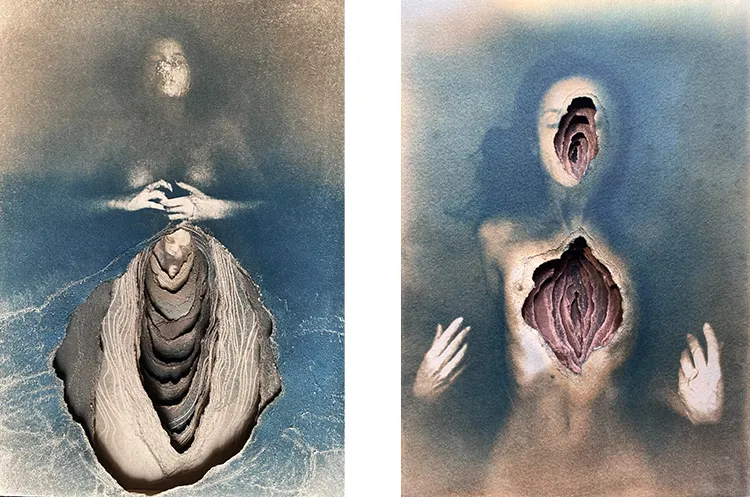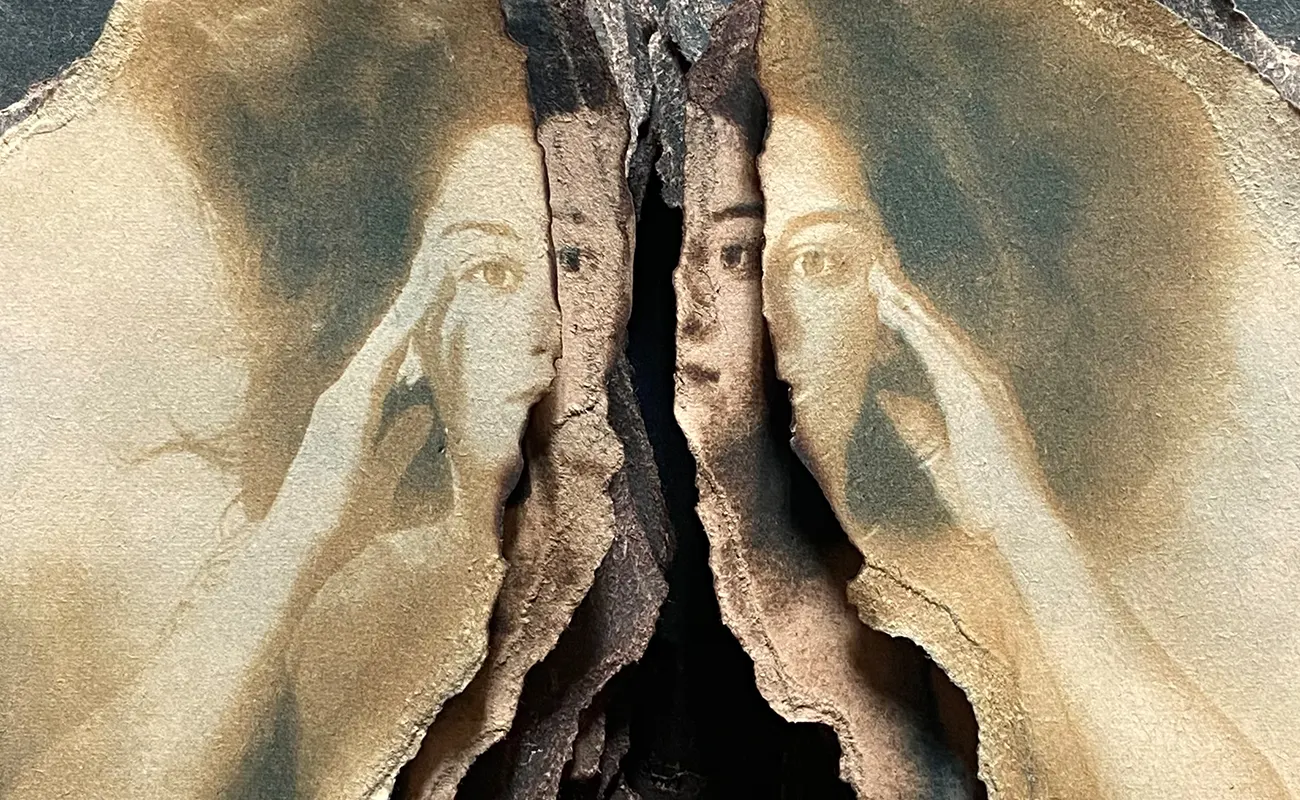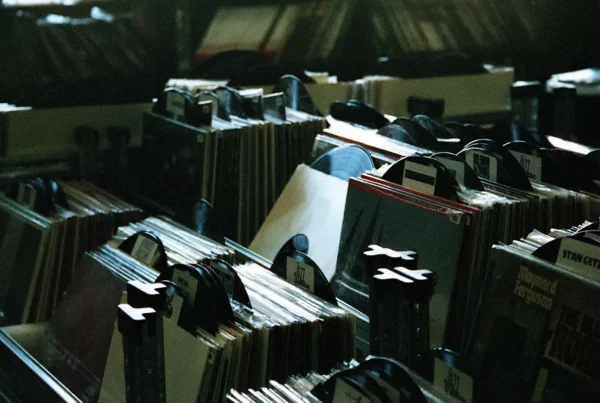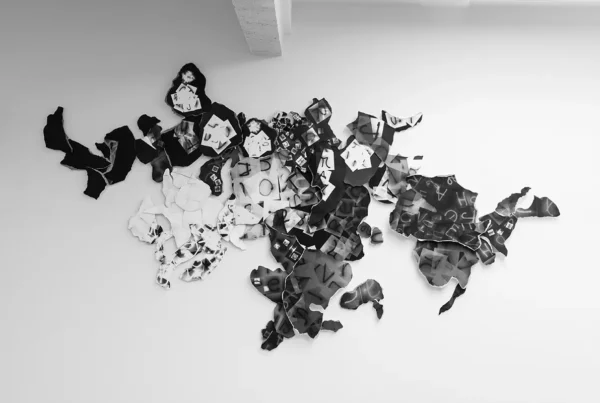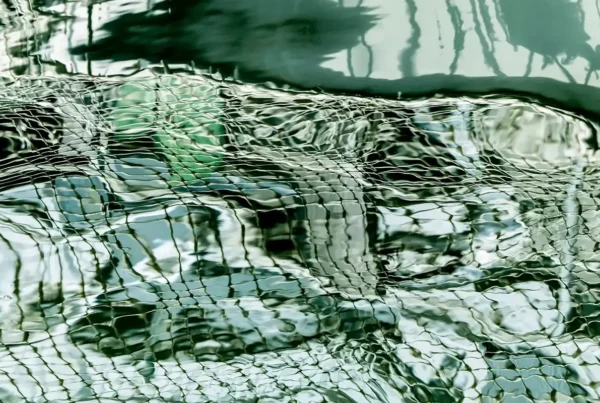“I chose photography partly because I have a need and desire to remember people and moments that no longer exist.”
A Journey Shaped by Creativity and Resolve
Ramona Zordini’s artistic path is one marked by resilience, passion, and an unwavering need for self-expression. Growing up in Italy, she turned to creativity as both an escape and a means of processing a difficult childhood. Art was never merely an interest—it was an essential lifeline, a tool for survival that she embraced from an early age. Initially drawn to drawing and painting, she envisioned a future dedicated to these forms. However, her trajectory shifted during her academic studies when a particularly inspiring photography professor introduced her to the expressive possibilities of the medium. That moment sparked an enduring love for photography, setting her on a path that would define her career.
After completing her academic education, she immersed herself in the art world, navigating the challenging yet rewarding landscape of exhibitions and competitions. Zordini’s work steadily gained recognition, not through adherence to a specific artistic label but through her relentless exploration of transformation, identity, and raw human emotions. Though her work is rooted in photography, her approach is unconventional, pushing the boundaries of technique and form. As her artistic voice evolved, she gravitated toward alternative photographic processes, eventually finding her creative home in Cyanotype—a medium that resonated deeply with her vision.
Zordini describes her connection to Cyanotype as immediate and profound, a love-at-first-sight experience. Unlike traditional photography, which captures a moment in time with stark precision, Cyanotype allows her to manipulate, distort, and reconstruct imagery in ways that feel organic and deeply personal. Her practice has since centered around a rare variation of the process known as Tricolor Cyanotype, a technique that adds complexity and depth to her compositions. Through this method, she crafts intricate collages that, while appearing seamless, undergo extensive transformations before reaching their final form.
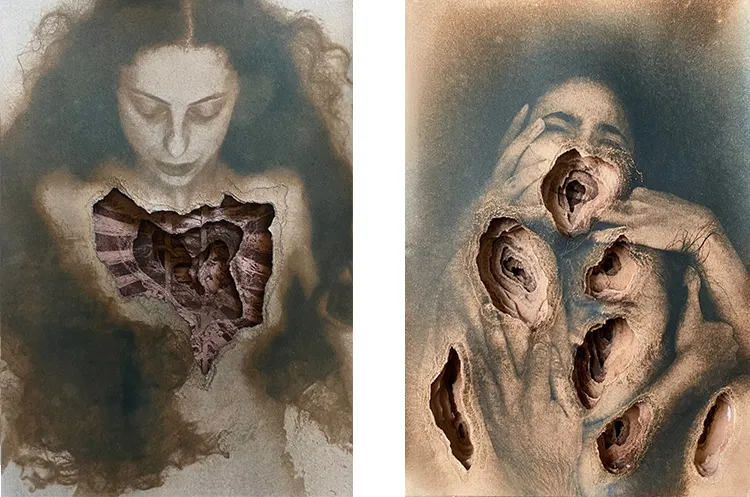
Ramona Zordini: The Emotional Undercurrents of Art
The heart of Zordini’s work lies in her exploration of human emotions—particularly those that exist in tension, discomfort, and transition. She delves into themes of identity, personal evolution, and the psychological weight of change. Her compositions act as visual metaphors, capturing the inexpressible states of being that define the human experience. The blending of different images, textures, and Cyanotype layers allows her to construct a narrative that feels both intimate and universal.
Her artistic process is meticulous, involving multiple stages of experimentation, layering, and refinement. While her final pieces often exude a dreamlike quality, they are rooted in a deep engagement with reality. She describes her Cyanotype collages as being in constant transformation—mirroring the very subjects they depict. The fragmented, layered nature of her work speaks to the complexities of memory, time, and self-perception. Every element within her compositions is deliberately chosen, each alteration representing an emotional shift or internal conflict.
Zordini’s workspace reflects the intricate nature of her process. Surrounded by paper, photographic chemicals, negatives, a bromograph, and a constantly occupied work table, she moves between artistic experimentation and the demands of daily life. As a mother of two, with a home that also includes a dog and two cats, she navigates the challenge of balancing intense creative focus with an environment full of distractions. Yet, despite these interruptions, her dedication remains steadfast. She often works during the quiet hours of early morning or late at night, times when the external world recedes, allowing her complete immersion in her art.
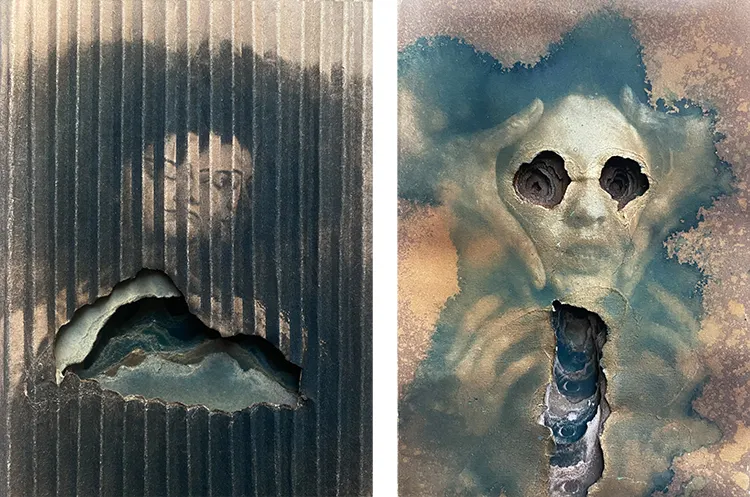
The Influence of Masters and the Rhythm of Cyanotype
Zordini’s artistic sensibilities have been shaped by both historical and contemporary influences. Among the masters who have left a lasting impact on her work, Max Ernst and Gustav Klimt stand out as sources of inspiration. The surreal, intricate compositions of Ernst, in particular, resonate with her deeply—his painting Bride Dressing is one she could spend hours admiring, drawn in by its masterful use of color and boundless creativity. The psychological intensity in Ernst’s work finds echoes in her own practice, where subconscious emotions are given a visual form.
Beyond historical figures, she finds equal inspiration in contemporary artists such as Roger Ballen and Lola Dupré, whose innovative approaches challenge the boundaries of photographic and collage-based art. She is also drawn to emerging talents like Evelin Bencicova, whose conceptual imagery aligns with her own interests in identity and transformation. These diverse influences fuel her continuous experimentation, pushing her to refine and expand her practice.
For Zordini, Cyanotype is more than just a technique—it is a medium that moves in harmony with her creative rhythm. Unlike conventional photographic processes that rely on instant results, Cyanotype demands patience and adaptation. The unpredictability of the process mirrors the fluidity of emotion and memory, making it the perfect vehicle for her artistic exploration. She describes it as a dance, a continuous exchange between control and surrender, where each step in the process reveals new possibilities. This balance between structure and spontaneity is what makes her work so dynamic, each piece carrying an energy that feels simultaneously deliberate and organic.
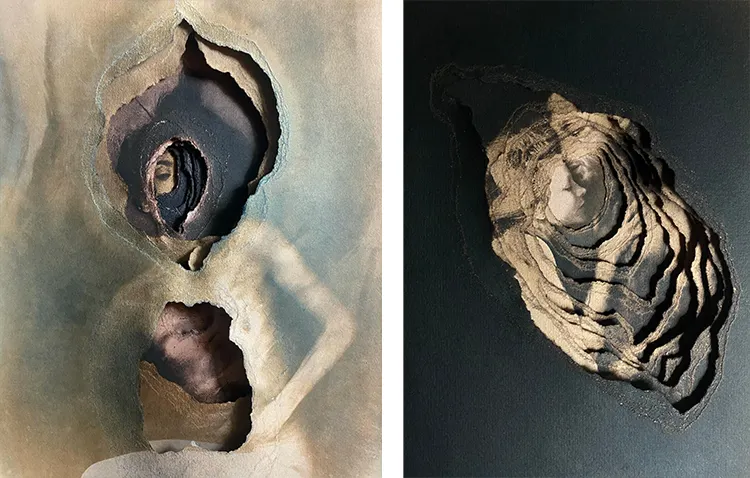
Ramona Zordini: Dreaming in Cyan and Stone
While Zordini has already established a unique voice within the art world, her vision extends far beyond her current body of work. She dreams of creating large-scale projects that demand unconventional spaces, pushing the boundaries of how her Cyanotype compositions interact with their surroundings. Among the many concepts she envisions, one stands out—a project that has lingered in her mind for years, waiting for the right conditions to materialize. It requires an ancient circular room with raw stone walls, a setting that would amplify the depth and texture of her work. This ambitious vision remains an aspiration, dependent on grants and logistical possibilities, yet she remains confident that it will one day come to life.
Her artistic ambition is fueled not only by a desire to expand the scale of her work but also by an insatiable curiosity for new techniques. Though photography remains central to her practice, she continuously experiments with other mediums, including drawing, sculpture, etching, graphic design, sewing, and set design. Each new skill adds another layer to her artistic language, allowing her to approach her work from fresh perspectives.
At her core, Zordini is an artist driven by an intense need to preserve, remember, and communicate. Photography, for her, is not just about capturing an image—it is a way of holding onto moments and people that might otherwise fade into obscurity. Cyanotype, with its slow and immersive process, aligns with this impulse, offering her a way to construct memory rather than merely document it. Whether working on a small collage or envisioning an expansive site-specific installation, her commitment to exploring the depths of human emotion remains the guiding force behind her art.
